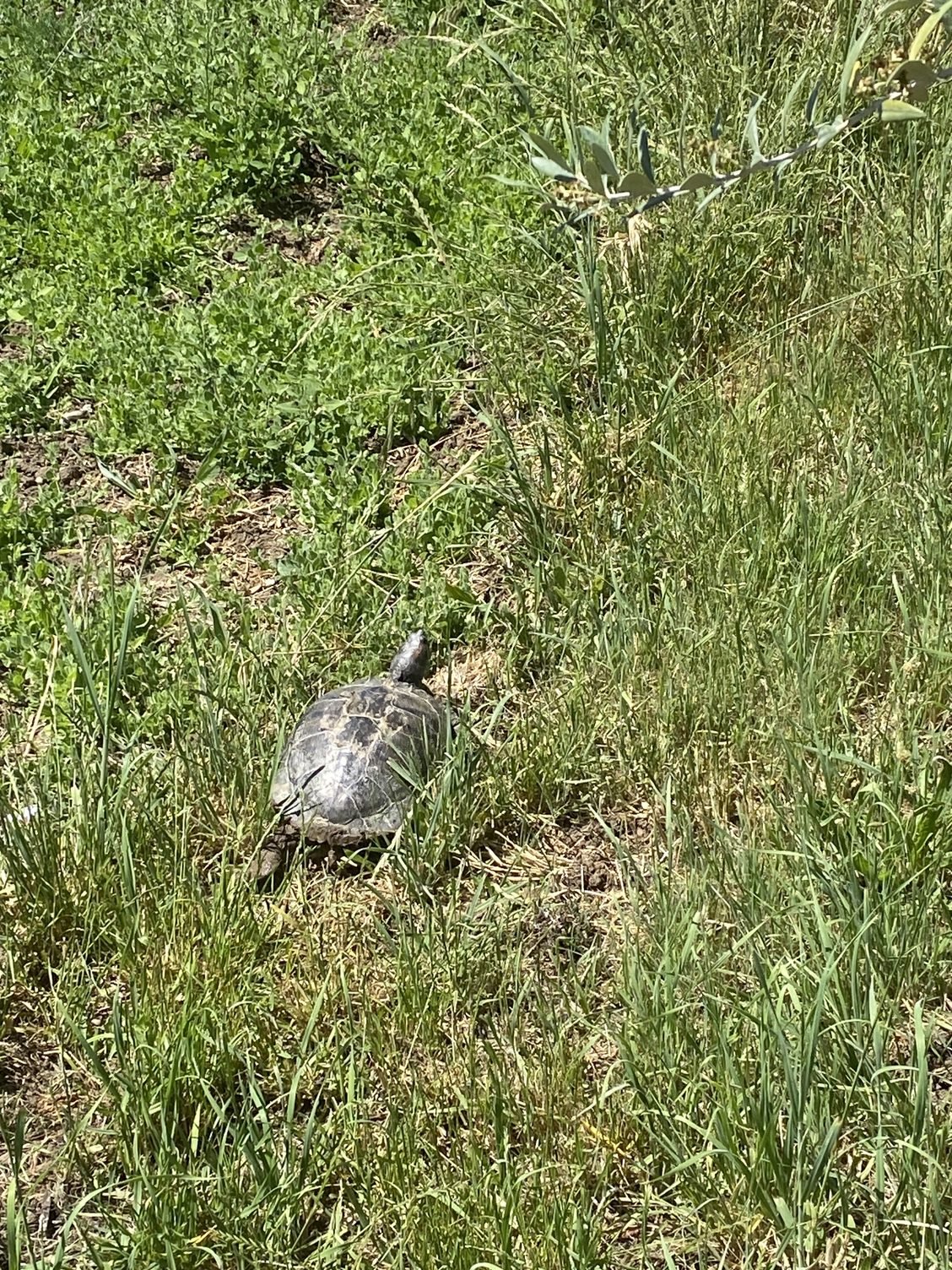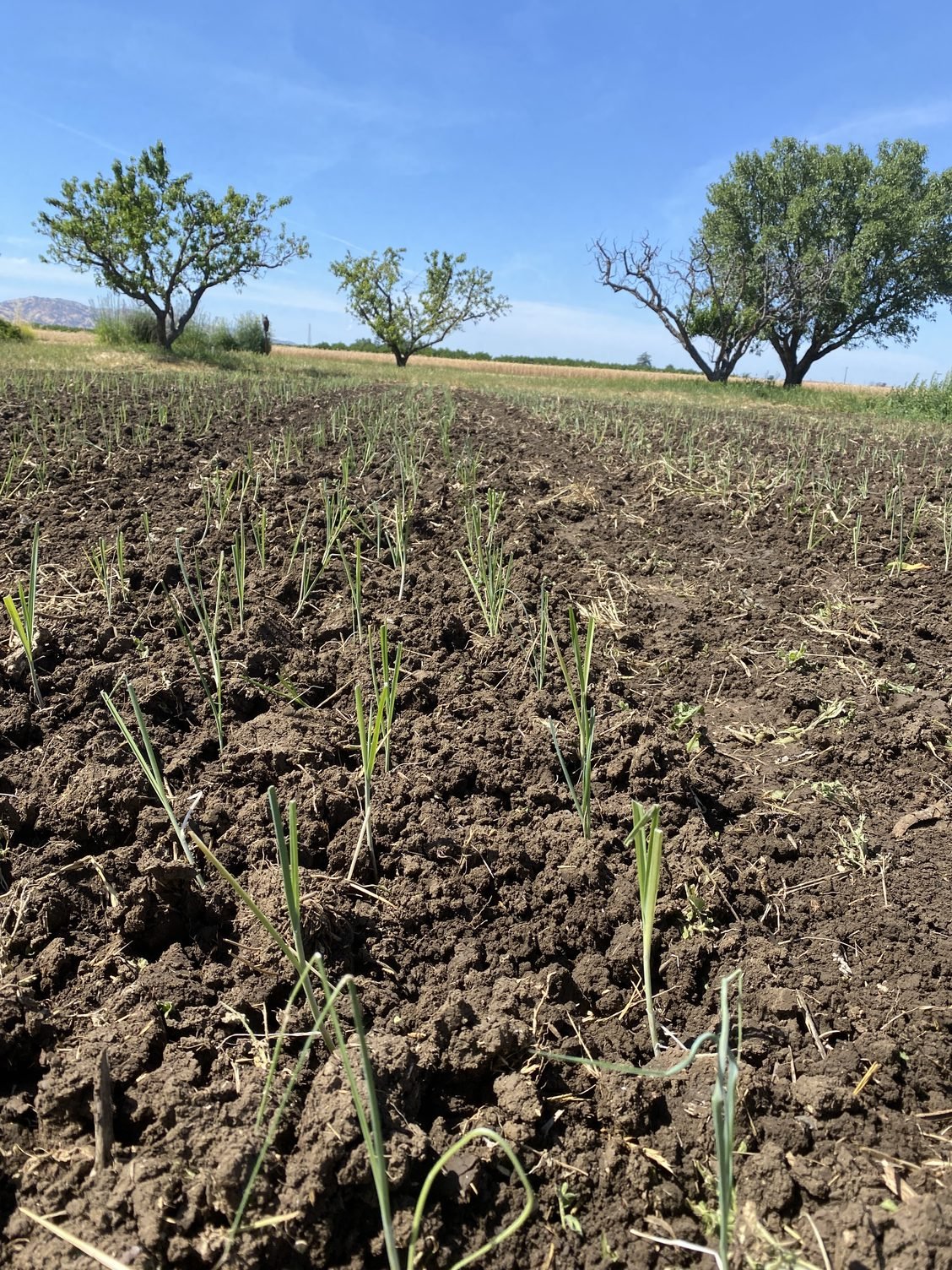The return of the turtle plus first summer squash
Just under a year after the turtle that lives in the pond introduced himself to us he reappeared again this past week.
This year he was also in the tomatoes at first but this time he went over to the carrots to find a more muddy spot to rest in.
He blended in so well we didn’t notice him until we got up close and then got to experience him scampering away as fast as he could.
It is great to see the ecosystem that is on the farm and all the animals that thrive in it including the turtle and so many frogs we see every day.
The new veggie we are starting to harvest this week is summer squash which has been growing quickly in the warm weather and we have to harvest it most days to have them at the right size.
We are growing a more standard green zucchini called Dunja along with an Italian heirloom variety called Costata Romanesco that is gray-green with some ribbing and has a delicious slightly nutty flavor to it.
The blockier variety we are growing that is pale green is called Magda and has a similar nutty flavor to our fourth variety, Zephyr, which are mostly yellow with one end having some green on it.
We are growing double what we grew last year of summer squash and hopefully are able to apply lessons we learned last year to have a great harvest all summer long.
The first green beans are starting to size up and we may have a handful for market on Saturday. They usually have a few at the start before a big flush for a few weeks and then they slow down so we have a number of successions planted to keep a hopefully steady supply.
The last big transplant of the spring took place Monday with all of our leeks going into the ground. We seeded these in the greenhouse in February, a few weeks later than last year, and then we will begin to harvest them sometime in October.
It is the most leeks we have transplanted in our three years even though we didn’t seed more than the past two years in the greenhouse. The difference is that this year there was much better germination of the leeks and each tray was mostly filled with germinated cells instead of only being partially filled.
Having more leeks than expected we just had enough space prepared for them in the area we planned for all of our alliums that will be in the ground in the fall in winter. The rest of the area has spring crops currently so those will get mowed in a few weeks and then in September we will prepare the rest of the area for the garlic and onions.
Growing them all summer means that we will have to pay attention to keeping the weeds under control as they will grow rapidly if we don’t.
We’ve been having to do lots of weeding and although its necessary we would prefer to be spending that time harvesting.

